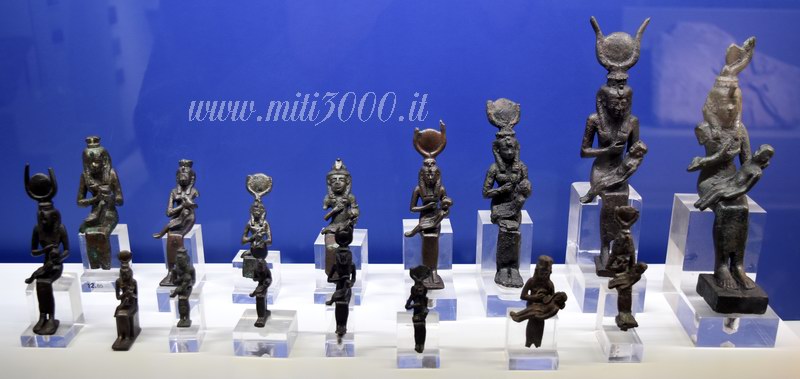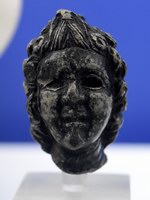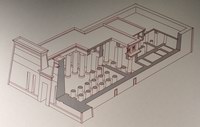Indice dei Musei
presenti in miti3000
Napoli Museo Nazionale - Piano - 1 - Sala XXII
- Intro sala XIX
- Sala XIX
- Intro sala XX
- Sala XX
- Intro sala XXI
- Sala XXI vetrina 49
- Sala XXI vetrina 50
- Sala XXI vetrina 51
- Sala XXI vetrina 52
- Sala XXI vetrina 53-54
- Sala XXI vetrine 55-56
- Sala XXI vetrine 57 - 58
- Sala XXI vetrine 60 - 61
- Sala XXI vetrine 62 - 63
- Intro Sala XXII
- Sala XXII vetrine 70 - 78
- Sala XXII vetrine 79 - 84
- Intro Sala XXIII
- Sala XXIII v.87-92
- Sala XXIII v.93-97
- Sala XXIII v.98-104
Testo
Sala XXII - vetrine 70 - 78
Posiziona il mouse sulle immagini per avere più informazioni, Cliccaci sopra per l'ingrandimento.
Place the mouse on the images to get more information, click on it to enlarge
|
|
|
Vetrina 77
Sette statuine di Arpocrate in varie attitudini e diversi copricapi
Bronzo. Epoca Tarda (664-332 a.C.) Collezione Borgia
Seven statuettes of Harpocrates in various attitudes and with different headdresses
Bronze. Late Period (664 - 332 BC) Borgia collection
Posiziona il mouse sulle immagini per avere più informazioni, Cliccaci sopra per l'ingrandimento.
Place the mouse on the images to get more information, click on it to enlarge.

Vetrina 78
ISIDE ‘LACTANS’
L’immagine della dea Iside che allatta Horus bambino (Arpocrate), ritratto con la caratteristica treccia dell’infanzia, si riallaccia al mito di Osiride, nel quale viene stabilita la discendenza regale di padre in figlio, garantita dalla madre divina. L’allattamento del sovrano da parte di una divinità femminile è infatti uno dei rituali dell’incoronazione.
L’aspetto materno di Iside e la sua natura di divinità protettrice conoscono in epoca tarda una particolare fortuna, al di là dei riferimenti regali e divini, come dimostra il proliferare di statuine soprattutto in bronzo.
Isis ‘lactans’
The image of the goddess Isis suckling Horus the Child (Harpocrates), who is portrayed with the characteristic tress of childhood, was especially popular in the Late Period, as the large number of bronze statuettes surviving from this time bear out.
Isis’ nature as a protective deity led her cult to spread beyond the confines of Egypt from the third century BC onward and throughout the Roman imperial period.






















